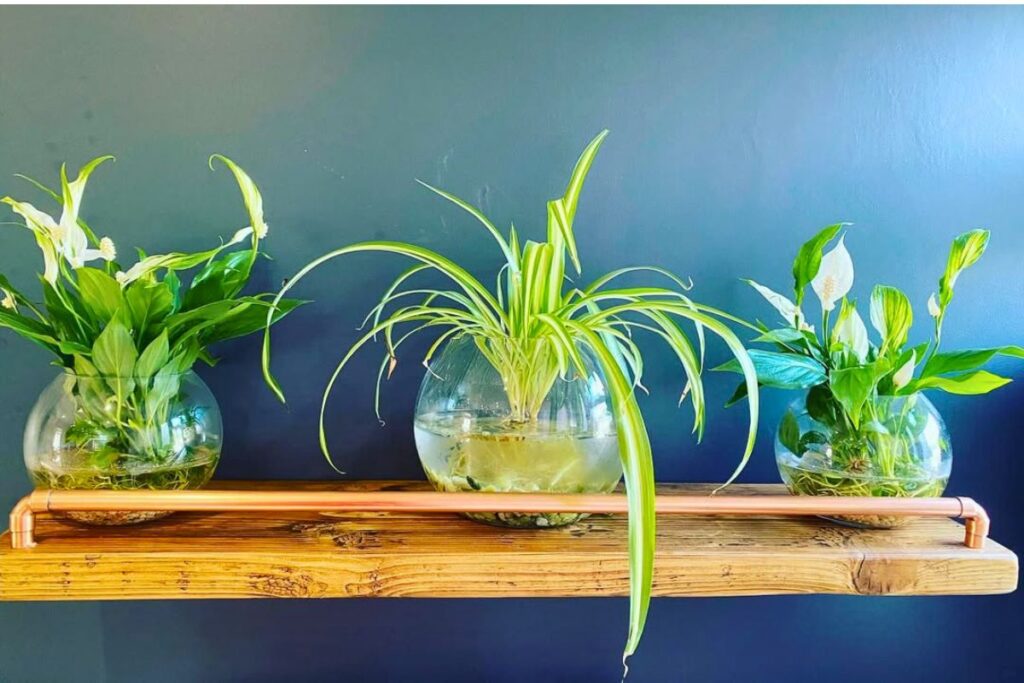Spider plants are popular houseplants known for their lush, arching leaves and ease of care. Did you know you can grow these beautiful plants in water? It’s a great way to add a touch of greenery to your space without the mess of soil. Let’s dive into the steps for growing spider plants in water and tips for keeping them healthy and vibrant.

Contents
Choosing the Right Container
Selecting the right container is crucial for growing spider plants in water. Look for a transparent glass jar, vase, or any clear container to showcase the roots. Ensure the container is large enough to accommodate the plant’s root system.
Tips:
- Clean the container thoroughly to prevent algae growth.
- Opt for a container with a narrow neck to support the plant.
Preparing the Plant
Before transferring your spider plant to water, you need to prepare it properly. Choose a healthy spider plant with well-developed roots. If you’re starting from a spiderette (baby spider plant), make sure it has tiny roots forming.
Steps:
- Remove the plant from its soil pot.
- Rinse the roots gently to remove all soil residues.
- Trim any damaged or dead roots with clean scissors.
Setting Up the Water Culture
Now that your plant is ready, it’s time to set up the water culture. Fill your chosen container with clean, room-temperature water. Distilled or filtered water is preferable to avoid chlorine and other chemicals found in tap water.
Steps:
- Place the plant in the container, ensuring the roots are submerged in water.
- Add decorative stones or marbles to anchor the plant if needed.
Maintaining Your Water-Grown Spider Plant
Keeping your water-grown spider plant healthy involves regular maintenance. Change the water every two weeks to prevent stagnation and algae growth. Keep an eye on the water level and add more if needed.
Tips:
- Place the plant in a spot with bright, indirect sunlight.
- Clean the container regularly to avoid algae buildup.
- Monitor the roots for signs of rot and trim any affected parts.
Feeding Your Spider Plant
While spider plants in water don’t require as much feeding as those in soil, they still need some nutrients to thrive. Use a diluted liquid fertilizer every 4-6 weeks to provide essential nutrients.
Tips:
- Avoid over-fertilizing, as it can lead to nutrient burn.
- Use a balanced, all-purpose liquid fertilizer.
Common Issues and Solutions
Even with the best care, you might encounter some issues. Here are common problems and solutions:
Algae Growth
- Problem: Green algae growing in the water.
- Solution: Clean the container thoroughly and change the water more frequently.
Root Rot
- Problem: Roots turning brown and mushy.
- Solution: Trim affected roots and reduce water levels to improve air circulation.
Growing spider plants in water is a rewarding experience that adds a unique touch to your indoor gardening. With the right care and attention, your spider plant will flourish and bring a fresh, green vibe to your home.
